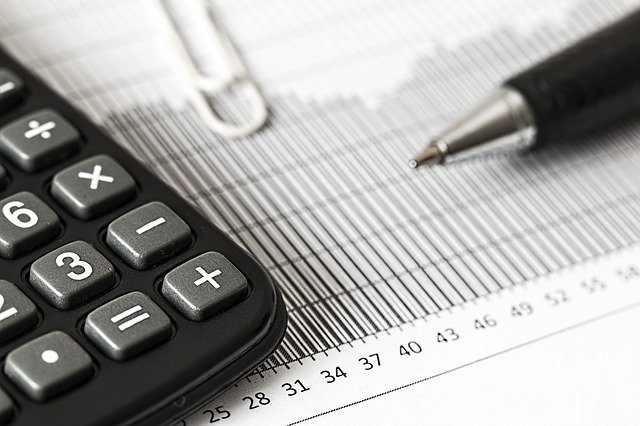This article is original content written by Manchester, CT Financial Advisor Thomas Scanlon, CFP®, CPA
1. Know Where to Start
Most advice would suggest starting with knowing your goals. This is good advice with financial planning; it’s just not the first place to start.
The first step is to have an adequate Cash Reserve. Everyone needs to maintain an adequate Cash Reserve. It’s not a matter of if something will go wrong; it’s a matter of when. Having an adequate cash reserve will allow you to sleep at night. That’s priceless. Many commentators suggest having six months of living expenses in your cash reserve. Most folks have nowhere near this amount. Don’t beat yourself up over this. Start where you are and add to your reserve over time.
Then you’ll need to know Why Defense First Wins Your Financial Planning Game. Having a risk management plan, backed up with the appropriate insurance coverage is also critical.
Now that you have an adequate cash reserve and have addressed your risk management it’s time to establish your goals.
What are you trying to accomplish? For many folks a reasonably comfortable retirement is at the very top of their list. Educating your children and grandchildren is generally right behind this. Buying a second home on or near the shore used to be up there also. With the, I’ll try to be kind, elevated prices and global warming (which apparently is NOT fake news) owning a beach home appears to have moved way down or even off the list. Philanthropy is also an objective of many of our clients.

2. Know Your Tax Bracket
When I ask someone their income tax bracket, I typically get an answer of “high.” Needless to say, this isn’t very helpful.
Review your Federal and State income tax returns to determine your income tax bracket. The Federal Income Tax rate in 2022 starts at 10% and goes up to 37%. The Capital Gains tax rate is 0%, 15% or 20%. The State of Connecticut Income Tax rate is from 3% to 6.99%.
Higher income earners should consider tax-free income. This is from investing in municipal bonds. The income earned on these bonds is federally income tax- free. Lower income earners should not invest in municipal bonds. Municipal bond yields are generally lower than other yields due to the fact they are backed by the municipality or a revenue bond project. Lower earners should look for higher yielding taxable bonds, pay the tax at a lower rate and likely have a better after tax return.
3. Know Your Tools
Fortunately the IRS Code has many tools you could potentially utilize for your tax smart investing. The most common tools are:
- 401(k) Plan – This plan has become the cornerstone for most folk’s retirement. ‘Back in the day’ employers would offer a pension plan for employees that stuck around long enough to vest in the plan. Those days are long gone. Generally, the only employees who are eligible for a pension now are Federal, State and Municipal employees.
Many employers will offer a 401(K) Plan to employees. According to the U.S. Bureau of Labor Statistics 67 percent of private industry workers had access to retirement plans in 2020. (1)
For 2022, employees can contribute up to $20,500 annually to their 401(k) Plan. Employees age 50 and older can contribute an additional $6,500 for a total of $27,000. Contributions are made via payroll deduction and are pre-tax. Funds in the account grow tax-deferred. They are taxed as ordinary income when they are taken out. They can be taken out at age 59 ½ without the premature distribution penalty of 10%. At age 72 you must begin to take out your Required Minimum Distribution (RMD). This requirement is that the account needs to be distributed at a minimum over your life expectancy.
About 82% of employers that offer a 401(k) Plan will match a portion of the employee’s contributions. (2) So, if your employer offers a 401(k) Plan and provides an employer match, enroll in the plan. Contribute at least enough to get the employer match.
- IRAs – For taxpayers with earned income, they may be eligible for an IRA contribution. Earned Income is from working as an employee, being self-employed or being active a partner or member in an operating business. You can contribute up to $6,000 a year. Taxpayers age 50 and older can contribute an additional $1,000 or $7,000 a year in total. There are income limitations if you or your spouse is participating in a retirement plan at work.
IRAs are also subject to the RMD rules like the 401(k) Plan mentioned above.
- Roth IRAs – to contribute to a Roth IRA you have the same earned income requirement as an IRA. Additionally they have the same contribution limits as IRA’s. $6,000 a year plus an additional $1,000 if you are age 50 or older.
The income limitation to be eligible for a Roth IRA starts at $129,000 for singles and $204,000 for married filing jointly.
Unlike the IRA, Roth IRA contributions are not income tax deductible. It’s funded with after tax dollars. The advantage is that if distributions are not made until after age 59 ½ and the account was open for at least five years, all of the distributions are tax-free.
I’ll repeat….Tax-Free.
Additionally, the Roth IRA is not subject to the RMD rules mentioned above during the account holder’s and surviving spouse’s lifetime. They are only subject to the RMD rules for a non-spousal (children or grandchildren) beneficiary. The children or grandchildren would then have ten years to drain the account.
- Health Savings Accounts (HSAs) – These plans allow a tax efficient way to pay for health care. To be eligible, you need to have a High Deductible Health Plan. For a single individual this is $1,400, for a family it’s $2,800.
Additionally the maximum out-of-pocket limits are $7,000 for a single individual and $14,000 for a family.
Contributions to an HSA are tax deductible. For 2022 you can contribute up to $3,650 for self-only coverage annually and up to $7,300 for family coverage. Additionally, taxpayers age 55 and older can make an annual “Catch-Up” contribution of $1,000 annually.
When the HSA funds are invested, any growth may be tax-free. There are investment options within the HSA which tend to be mutual funds. Qualifying distributions from an HSA are tax-free.
There is no requirement that you pay your medical bills from your HSA annually. If you have other resources to pay your medical bills, you should use them. This will allow your HSA to grow over time. If you are fortunate enough to do this, you could access your HSA in retirement tax-free.
Action Items
- Set up your Cash Reserve.
- Implement your Defensive Game Plan.
- Maximize what the IRS Code gives you.
Remember, it’s not what you make. It’s what you get to keep that counts.
(1) BLS.GOV
(2) CNBC.COM
